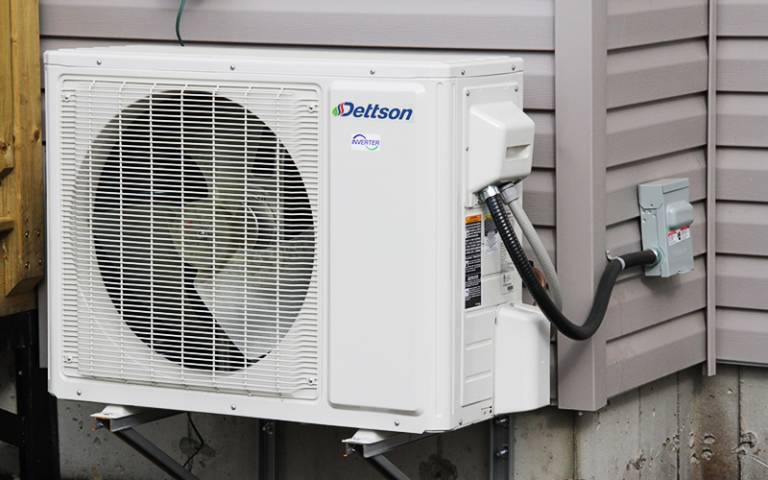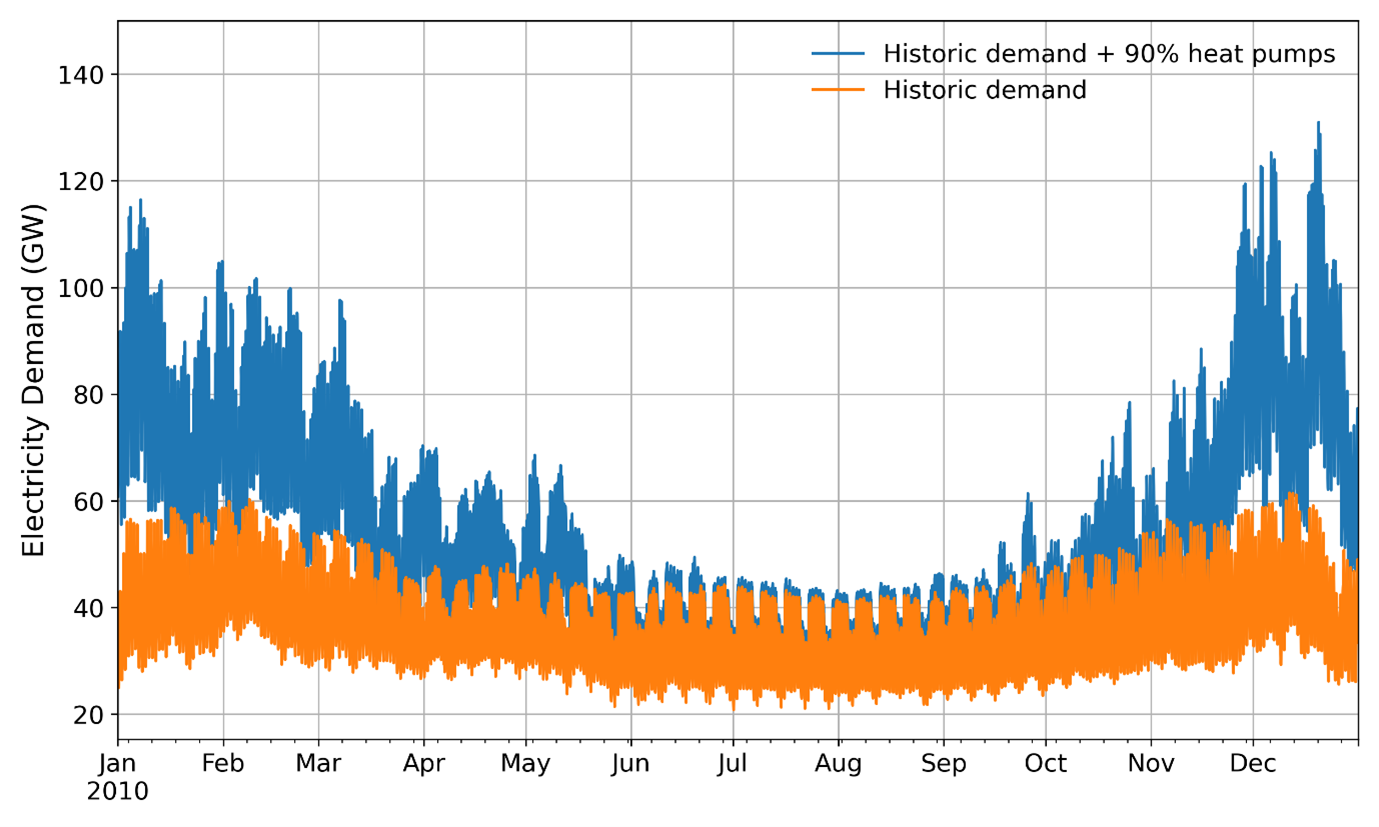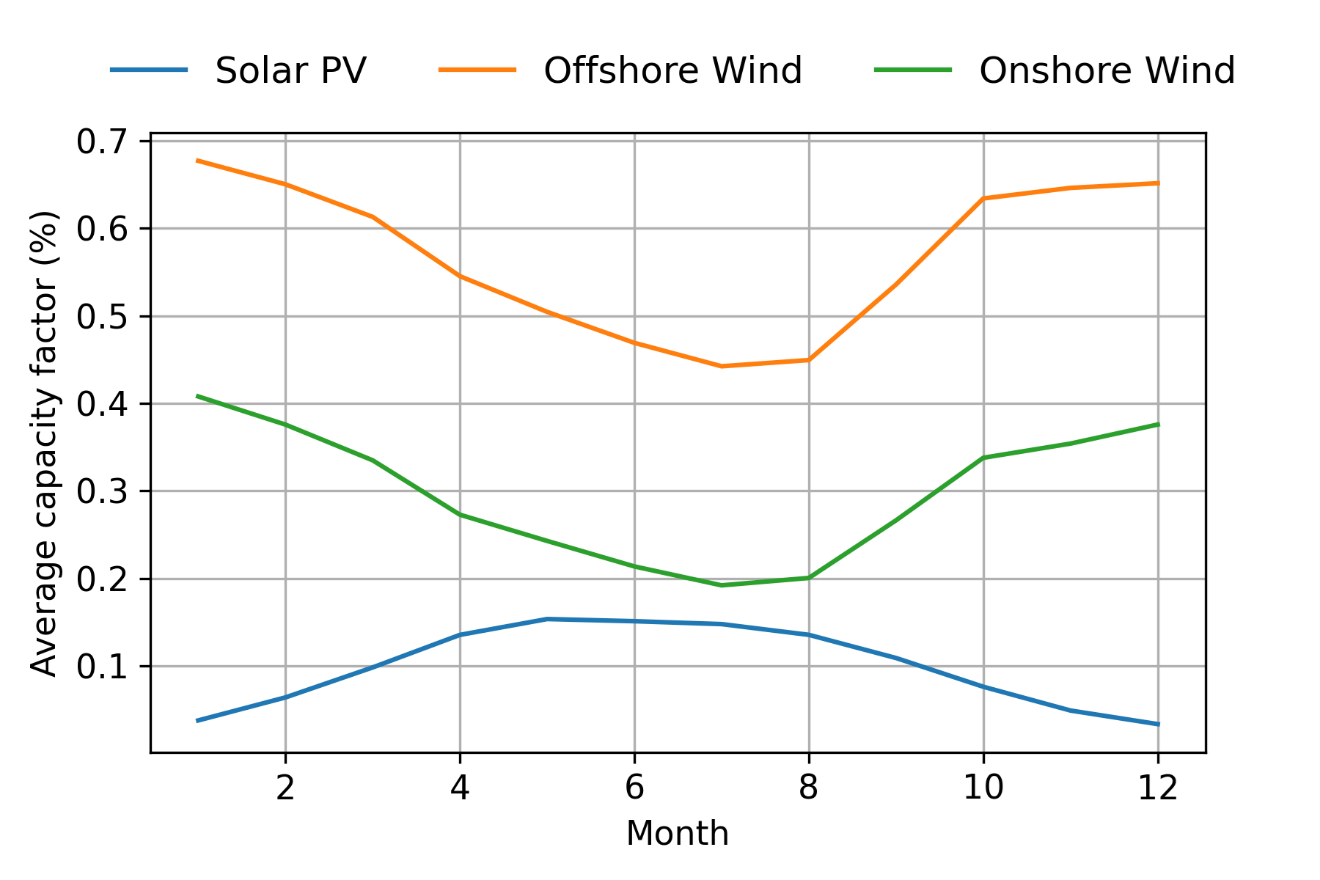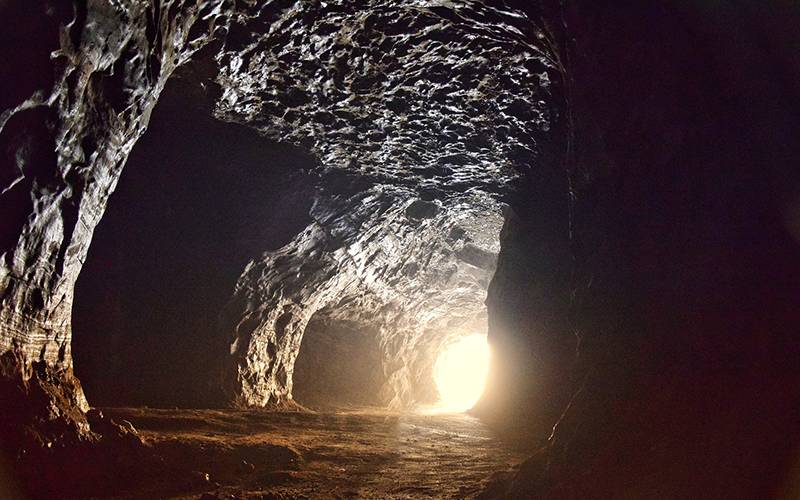Heat pumps for UK homes: how will they be powered?
24 February 2022
In this article UCL Energy Institute researchers Jenny Crawley and James Price discuss the feasibility of heat pumps in the UK, focusing on energy supply and demand.

The UK’s heat strategy relies heavily on the widespread adoption of electric heat pumps in homes. This could allow us to stop using fossil fuels to heat our homes, but only if we can supply enough zero carbon electricity to power all the heat pumps. Here we explore where the clean electricity might come from, and in particular the role of long-term seasonal energy storage.
There are many debates about how we should decarbonise heating in homes – should we use district heating, hydrogen, heat pumps or a different technology? In a previous blog, we explored what barriers need to be overcome if heat pumps are to become mainstream. One barrier we raised was the extra electricity we would need to generate, and the fact that this demand is not equally spread throughout the year. We felt that compared to the other challenges raised in the article, this one is not discussed very much, so we decided to explore it more.
The problem – seasonal electricity demand
So what exactly is the problem? Figure 1 shows hourly electricity demand over a year as it is now, in orange. It then shows what would happen if a large fraction of homes and businesses in the UK were heated by electric heat pumps, in blue.

Figure 1. Hourly electricity demand in 2010, a cold year, before and after adding the predicted effect of 90% uptake of heat pumps. Credit: James Price, UCL Energy Institute. Created using highRES energy system model
Without heat pumps, according to the orange line in Figure 1, winter electricity consumption is slightly higher than in summer, because we require more lighting and a small amount of electric heating. However, if most households start to use a heat pump, the “peak” (i.e. maximum) winter electricity use grows to more than double the summer consumption, and also more than double the current peak winter demand. This is because heating is such a large use of energy every year and is concentrated around the winter.
Of course, heat pumps will not be the right solution for every home; we are simply presenting a scenario here to show the potential size of the problem. How are we to run a net zero energy system where the electricity demand is firstly greatly increased from today’s levels, and secondly so different in winter and summer?
Sources of zero carbon electricity
There are three main options for supplying the extra electricity needed in winter in a future where a large number of households use heat pumps:
Generate it all ourselves as and when needed
Can we simply install enough wind turbines, solar panels and nuclear power stations to ensure the winter peak demand is met? We could, but this would be an extremely expensive solution. To show why, we need to think about how much these extra assets would get used throughout the year. This is quantified as their ‘capacity factor’ - the fraction of the amount of power capacity installed that is actually generated, over the year. Nuclear power stations have a more or less constant output which does not depend on the weather, so building enough of them to meet winter peak demand in Figure 1 would result in a huge excess of electricity in the summer.
Wind and solar power produce less electricity when it is less windy or sunny. This is shown in Figure 2: it is windiest in winter, which fortunately corresponds with when electricity demand is highest. But again, if we installed enough wind turbines to meet heat pump maximum winter demand, the wind turbines would generate spare electricity in summer we could not use. Solar panels cannot really help here, as they generate most electricity in summer when we will not need it as much.

Figure 2 Monthly average capacity factor for wind and solar in the UK based on 20 years of weather data (1993-2012) but assuming larger turbines as is expected to be standard in future (3MW onshore, 15MW offshore).
So, although we could generate enough electricity to meet the winter peak demand using renewable sources, this would entail spending huge amounts of money on assets and not getting very good value for money from them.
Store the excess electricity generated by wind and solar throughout the year for use in winter
This would require a way to convert electricity into a form we can store for months, and then convert it back to electricity when it is needed; we’ll come back to this later.
Import the electricity needed in winter from abroad
Currently, the UK has electrical connections to France, Ireland, Belgium and The Netherlands. In theory we could pay these countries for extra electricity in winter, although it is unclear how much spare they each would have to sell to us at that time of year, given their own plans to install heat pumps.
James’ recent research has shown that the most cost effective way of providing enough low carbon electricity is to combine these three options as follows:
- generate most of it ourselves from renewables
- importing a little from abroad
- storing energy generated by wind and solar PV during periods of low demand between spring and autumn to use in winter
We already have experience of generating and importing electricity, but storing it for periods of months at a time is not something we currently do. Below, we explain more about what is termed seasonal energy storage.
Seasonal energy storage
Much like batteries, seasonal, or long duration, energy storage takes in energy when it is plentiful (and therefore cheap) and then releases that energy when demand is high and it is needed. However, unlike batteries, this type of storage is able to discharge for many hundreds and perhaps thousands of hours because it has large amounts of cheap energy storage capacity. These extensive energy “reservoirs” are well suited to store low carbon electricity between seasons when it is abundant and seasons when it may not be.
While there are a number of technological options that could provide this service, one of the most promising is using renewable electricity to power electrolysers which split water to produce hydrogen. This so-called green hydrogen can then be stored underground before being converted back into electricity when needed via gas turbines or fuel cells. Although electrolysers are currently a more expensive way to produce hydrogen than from fossil fuels, their costs are expected to drop rapidly in the coming decades. At the same time, storing hydrogen underground is not a new idea, with salt caverns in Teesside already used for this purpose today.

Salt caverns like this one could be used to store excess energy from wind and solar power.
To explore the potential for seasonal storage to meet heat pump electricity demand in winter without emitting CO2, James and colleagues modelled the UK’s future power system and found that between 50-140 “Terra Watt-hours” of energy storage could be needed in salt caverns, equivalent in volume terms to 44,000-124,000 Olympic sized swimming pools. The energy to fill these caverns would come from excess wind and solar PV production from spring to autumn.
Today, such novel solutions to meet our future electricity needs are still in their infancy, but innovation funding is emerging with the UK Government recently launching a £68 million competition to support the development of long duration energy storage. At the same time the government has also provided £9.4 million for a first of a kind electrolyser project coupled to the UK’s largest onshore wind farm at Whitelee near Glasgow, enabling the production of hydrogen from excess wind generation.
Conclusion
In this article we have shown that if heat is provided by technologies which use electricity, the amount of electricity the country needs will dramatically increase, and most of this increase will happen in winter. One cost effective way of meeting this challenge is to store electricity produced by wind and solar power whenever their supply exceeds demand, and then to use it in winter. Producing green hydrogen by splitting water, then storing this hydrogen safely underground and converting it back into electricity when needed is a promising way of storing low carbon power between seasons. While it is still early days for such storage we are looking forward to ongoing research and development in this area in future.
Links
- Jenny Crawley
- James Price
- Related research: The role of new nuclear power in the UK's net-zero emissions energy system
- Related article: Making heat pumps happen
- Related article: How can we heat our homes without heating the planet?
Image credits: Main image of heat pump courtesy of Green Energy Futures. Above image of salt cavern courtesty of alperkures.
 Close
Close

